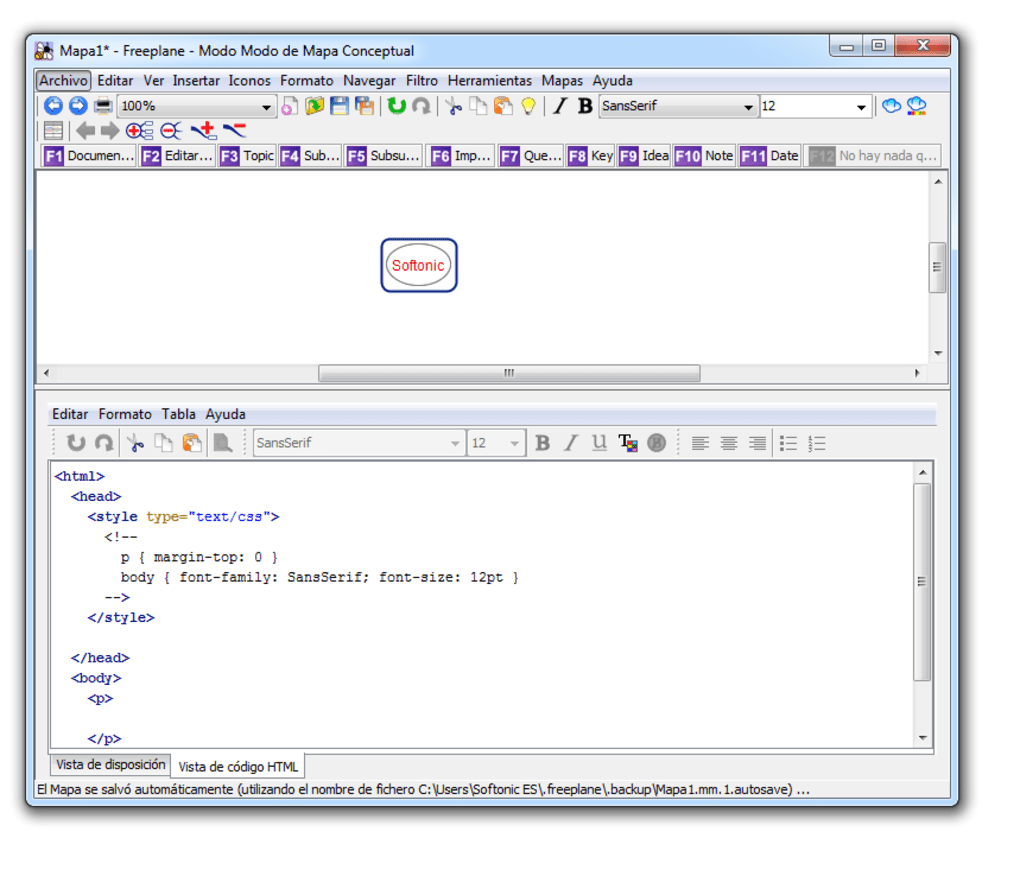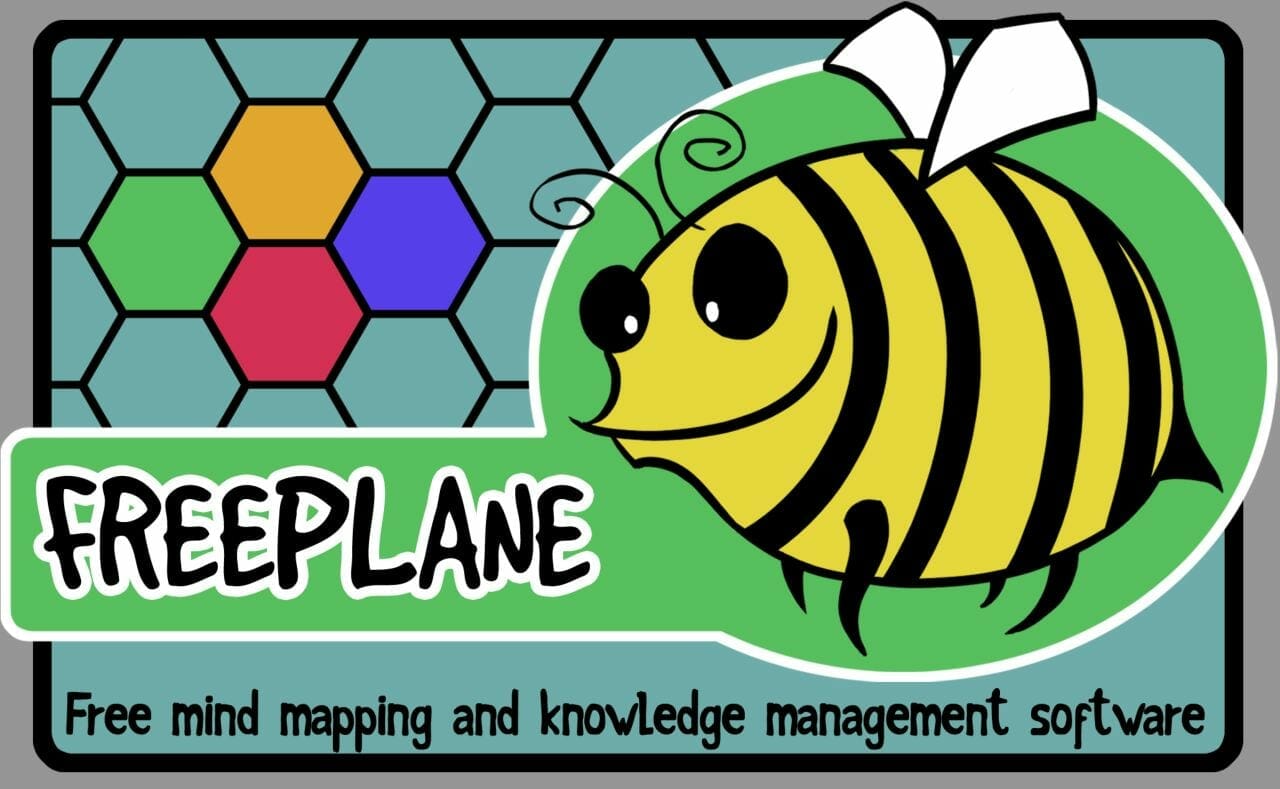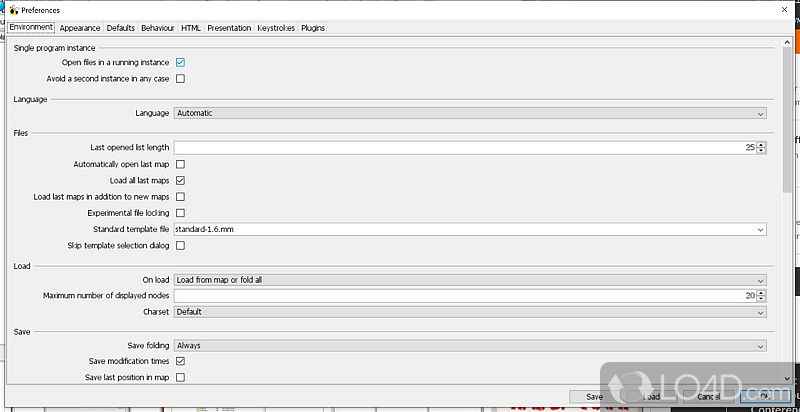
- #Freeplane tutorial how to
- #Freeplane tutorial update
- #Freeplane tutorial software
- #Freeplane tutorial password
- #Freeplane tutorial free
If your command name matches the snap name, users will be able run the command directly. AppsĪpps are the commands and services exposed to end users. Once an app is working well in devmode, you can review confinement violations, add appropriate interfaces, and switch to strict confinement. These can be reviewed by running journalctl -xe.īecause devmode is only intended for development, snaps must be set to strict confinement before they can be published as “stable” in the Snap Store. When a snap is in devmode, runtime confinement violations will be allowed but reported. This is indicated through the devmode keyword. It’s best to start a snap with the confinement in warning mode, rather than strictly applied. These are declarations that tell the system to give permission for a specific task, such as accessing a webcam or binding to a network port.

Unlike other container systems, the shape of this confinement can be changed through a set of interfaces. Snaps are containerised to ensure more predictable application behaviour and greater security. The next section describes the level of confinement applied to your app. A base snap is a special kind of snap that provides a run-time environment alongside a minimal set of libraries that are common to most applications: base: core18Īs used above, core18 is the current standard base for snap building and is based on Ubuntu 18.04 LTS. The base keyword declares which base snap to use with your project. This data is used in the presentation of your app in the Snap Store. The snapcraft.yaml file starts with a small amount of human-readable metadata, which usually can be lifted from the GitHub description or project README.md. Unzip -o DIST/freeplane_bin-*.zip -d $SNAPCRAFT_PART_INSTALL/ Source-tag: release-$SNAPCRAFT_PROJECT_VERSION JAVA_HOME: $SNAP/usr/lib/jvm/java-11-openjdk-amd64
#Freeplane tutorial password
Search/filtering, different export features, printing, password protectionĬommand: freeplane-$SNAPCRAFT_PROJECT_VERSION/freeplane.sh Would in a text editor, yet producing structured content that can beįeatures include ordering ideas in nodes and freely positionable nodes,Ĭonnecting nodes, automatic/conditional styles, scripting, add-ons, LaTeX, Occupying the middle ground between an editor and a diagramming tool,įreeplane allows the user to add content as quickly and naturally as they
#Freeplane tutorial software
The core of the software is tools for mind mapping (also knownĪs concept mapping or information mapping) and using mapped information.

Thinking, sharing information and getting things done at work, in schoolĪnd at home.
#Freeplane tutorial free
Summary: A free tool to structure and organise your information with mind mappingįreeplane is a free and open source software application that supports Snapcraft.yaml for Freeplane name: freeplane Using a few lines of yaml and the snapcraft tool, a Java application, it’s dependencies and the correct JRE can be packaged as a snap. The following example shows the entire snapcraft.yaml file for an existing project, Freeplane.

Snaps are defined in a single YAML file placed in the root folder of your project. For a more comprehensive breakdown of the steps involved, take a look at Creating a snap.
#Freeplane tutorial how to
Ready to get started? By the end of this guide, you’ll understand how to make a snap of your Java app that can be published in the Snap Store, showcasing it to millions of Linux users.įor a brief overview of the snap creation process, including how to install snapcraft and how it’s used, see Snapcraft overview.

If your app fails to upgrade, users automatically roll back to the previous revision.
#Freeplane tutorial update
Snaps automatically update to the latest versionįour times a day, users’ systems will check for new versions and upgrade in the background.īecause upgrades are not in-place, users can keep your app open as it’s upgraded in the background.They bundle the exact version of whatever is required, along with all of your app’s dependencies, be they Java modules or system libraries. Snaps install and run the same across Linux.Millions of users can browse and install snaps graphically in the Snap Store or from the command-line. Snaps solve these problems and ensure the correct JRE is shipped alongside the application at all times. When a Linux distribution changes the delivered JRE, this can be problematic for applications. Typically, the user has to make sure the JRE/SDK version and their environment are configured correctly. Distributing a Java application for Linux while reaching the widest possible audience is complicated.


 0 kommentar(er)
0 kommentar(er)
